In this guide, How to create a Minecraft server, we’ll take a step by step look on how to create a Minecraft server. Before delving into the creation of the server, we’ll see what hardware requirements your computer must have and what are the alternatives if you don’t want to rely on your home network.
After this introduction we’ll see how to set up the network to allow other players to connect. Then we’ll see how to create a free Minecraft server on your Windows or Linux PC.
In conclusion, we’ll see the server configurations and the main commands you can use as a server administrator.
Table of Contents
How to create a Minecraft server on your PC: requirements and alternatives
Before we see how to create a Minecraft server on your computer, using your home network, let’s see what hardware requirements you need and what are the alternatives besides creating your own server at home.
Hardware requirements to create a Minecraft server
Let’s see a summary table with the system requirements by operating system. The requirements, as indicated by Minecraft wiki, are based on creating a new world using the default settings.
Keep in mind that the resources (CPU and especially RAM) depend mainly on the number of players, the mods you want to use and other factors including:
- moving quickly (e.g., by train or boat) from one chunk of the world to another
- visit different chunks.
In addition, the requirements also increase as the world size increases and particularly when many advanced redstone circuits are used.
Windows operating system (Win7/8/10)
Requirements | CPU | RAM | Hard Disk | Numero giocatori | Upload (Mbit/s) | Download (Mbit/s) |
|---|---|---|---|---|---|---|
Minimum Requirements | Intel Core or AMD K8 CPU (or higher) | 2 GB | 10 GB | From 1 to 3 | 6 | 3 |
Recommended Requirements | Intel Core or AMD K8 CPU (or higher) | 3 GB | 18 GB | From 3 to 5 | 8 | 4 |
Optimal requirements | Intel Nehalem CPU or AMD K10 (3,6 GHz) | 8 GB | 35 GB (SLC SSD) | More than 8 players | 30 | 15 |
Windows Server
Requirements | CPU | RAM | Hard Disk | Numero giocatori | Upload (Mbit/s) | Download (Mbit/s) |
|---|---|---|---|---|---|---|
Minimum Requirements | Intel Core or AMD K8 CPU (or higher) | 2 GB | 2 – 5 GB | From 1 to 2 | 3 | 2 |
Recommended Requirements | Intel Nehalem CPU or AMD K10 | 4 GB | 18 GB | From 2 to 5 | 8 | 4 |
Optimal requirements | Intel Nehalem CPU or AMD K10 | 8 GB | 35 GB (SLC SSD) | More than 6 players | 30 | 15 |
UNIX/Linux operating system (GUI)
Requirements | CPU | RAM | Hard Disk | Numero di giocatori | Upload (Mbit/s) | Download (Mbit/s) |
|---|---|---|---|---|---|---|
Minimum Requirements | Intel Pentium 4 1,8 GHz, AMD Athlon XP 1600+, PowerPC 750 1GHz, PowerPC G4 1GHz | 512 MB | 2 – 5 GB | From 1 to 2 | 3 | 2 |
Recommended Requirements | Intel Core, AMD K8 CPU or IBM 970 2GHz | 5 GB | 16 GB | From 3 to 5 | 8 | 4 |
Optimal requirements | Intel Core, AMD K8 CPU or IBM 970 2GHz | 9 GB | 35 GB (SLC SSD) | More than 7 players | 30 | 15 |
UNIX/Linux operating system (console)
Requirements | CPU | RAM | Hard Disk | Numero di giocatori | Upload (Mbit/s) | Download (Mbit/s) |
|---|---|---|---|---|---|---|
Minimum Requirements | Intel Pentium 4 2 GHz o AMD Athlon | 512 MB | 2 – 5 GB | From 1 to 5 | 3 | 2 |
Recommended Requirements | Intel Core or AMD K8 CPU | 3 GB | 16 GB | From 10 to 15 | 8 | 4 |
Optimal requirements | Intel i5/i7, AMD Ryzen 5/7 | 6 GB | 35 GB (SLC SSD) | More than 20 players | 30 | 15 |
Alternatives to a Minecraft server on your PC
In addition to being able to play on a server created by another player, you can create your own Minecraft server. To do this you have two main options:
- create a Minecraft server using your home computer
- rely on a hosting company.
As we saw in the previous section, in order to create a Minecraft server from home you need to have a fairly high-performance computer. Depending on the number of players, then, you have to fit in the hardware requirements for your server to run properly.
Another disadvantage of creating a Minecraft server on your computer is that the operation of the server will be tied to it. So when you turn off your computer, the server will also stop working.
Also consider that you generally won’t be able to use the PC that you’ll be using as a host to run other programs.
Ideally using your own computer would allow you to create a Minecraft server for free. In reality, however, you always have to consider the costs in terms of consumption.
If your goal is to create a Minecraft server that is always active and performing well, the best solution is to rely on a VPS cloud hosting service or a dedicated server. You can check our articles to find out how much does a dedicated server cost and what is the cloud plan cost.
In this table you can see our recommended plans based on the number of players.
VPS cloud hosting recommended | Number of players |
|---|---|
Cloud 0 | 3 to 5 |
Cloud 1 | 5 to 8 |
Cloud 2 | 8 to 12 |
Cloud 3 | 12+ |
How to create a Minecraft server: preliminary operations
Let’s get into the heart of our guide on how to create a Minecraft server. You’ll see how to do it on Windows and Linux and in this section you’ll see the preliminary operations that you need to follow regardless of the operating system.
We’ll prepare the network to let other users connect to our server, and we’ll see how to download the necessary files for the Minecraft server to work.
Keep in mind that it is not recommended to create and manage a server if you are not familiar with network and system configurations.
Download Minecraft server
The first thing you need to do to create a Minecraft server is to download the server program from the site. The program to start the server is free and is distributed directly by Mojang Studios. To play the game, however, you’ll have to purchase a copy of Minecraft: Java Edition.
Note: the server we are going to create is only compatible with the game version “Minecraft: Java Edition”.
Connect to the server download page from the site Minecraft.net and click on “minecraft_server_1.17.1.jar” to download the server.
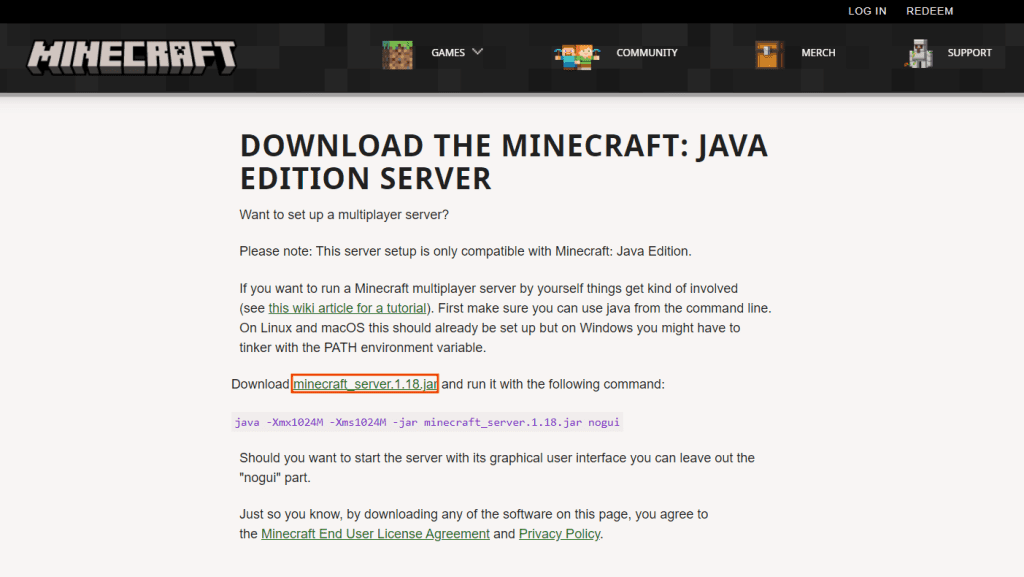
Remember that versions are constantly being updated. In fact, while I was writing the guide the server version was 1.17.1, but now 1.18 is already available. In any case, you must click on “minecraft_server.1.XX.X.jar” to download the server files.
Enable port forwarding on the router
When we enable port forward to create a Minecraft server, we need the local IP of the server. So in this case, if you are creating a Minecraft server on your computer you will need to locate the IP of your computer.
To identify your IP on windows, just open the command prompt and type:
ipconfigThe local IP address is of the type 192.111.1.111 and you will find it under “IPv4 Address”, as you see in this screenshot.
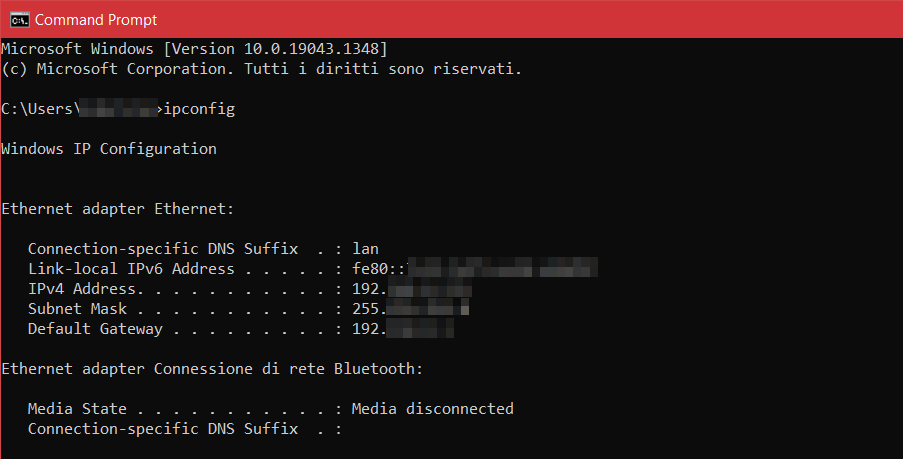
To enable port forwarding, you need to access the router’s settings. The procedure is manufacturer-specific, but generally the options to enable port forwarding are found in the firewall section.
Enter the local IP address of the server and in the field reserved for ports, both internal and external, enter the following value “25565”.
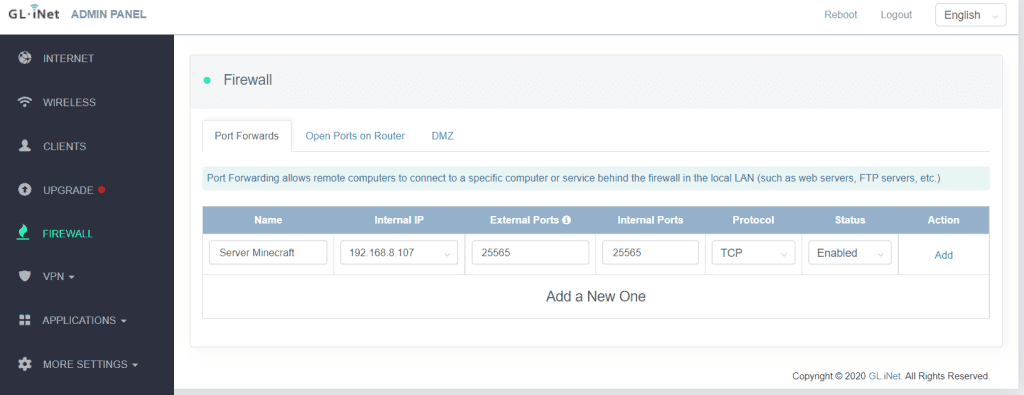
Set the protocol to TCP and add the port.
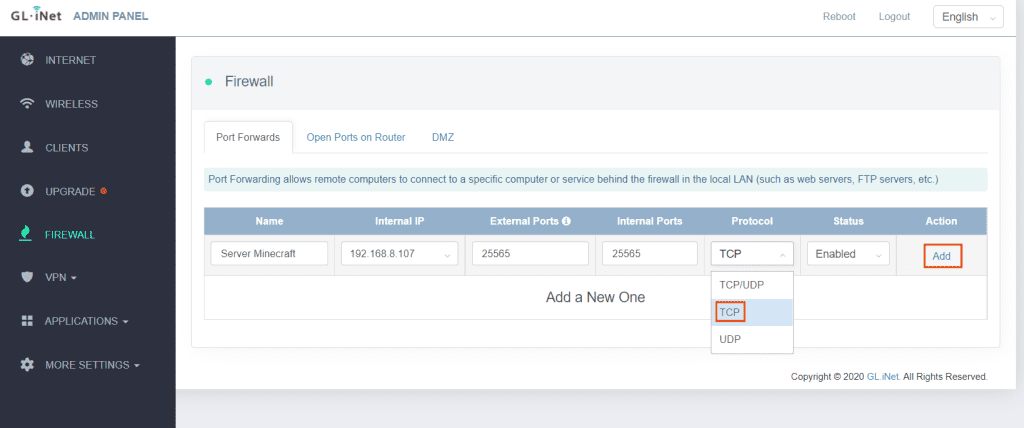
Remember that enabling port forwarding and sharing your IP address can put the security of your home network at risk.
How to create a Minecraft server on Windows
To create a Minecraft server on Windows we’re going to install the latest version of Java and start the server. We’ll also see how to automate the startup procedure, in order to make the startup faster.
Install the latest version of Java
To run the Minecraft server you’ll need to download the latest version of Java JDK, which is currently version 18.
To figure out which version is currently installed open the command prompt and type:
java -version
Start the server
The moment we start the Minecraft server jar file, some configuration files will be created. The first thing to do, therefore, is to create a new folder that you can call “Minecraft Server” and move the .jar file you downloaded into it.
At this point you can double click on the file and in this way the server configuration files will be created. Doing so will also create an “eula.txt” file. Open it and change the value “eula=false” to “eula=true” to accept the end user license agreement.

Then save the changes to the file from the File → Save menu or with the key combination Ctrl+S.
Double click on the .jar file again to start the server.
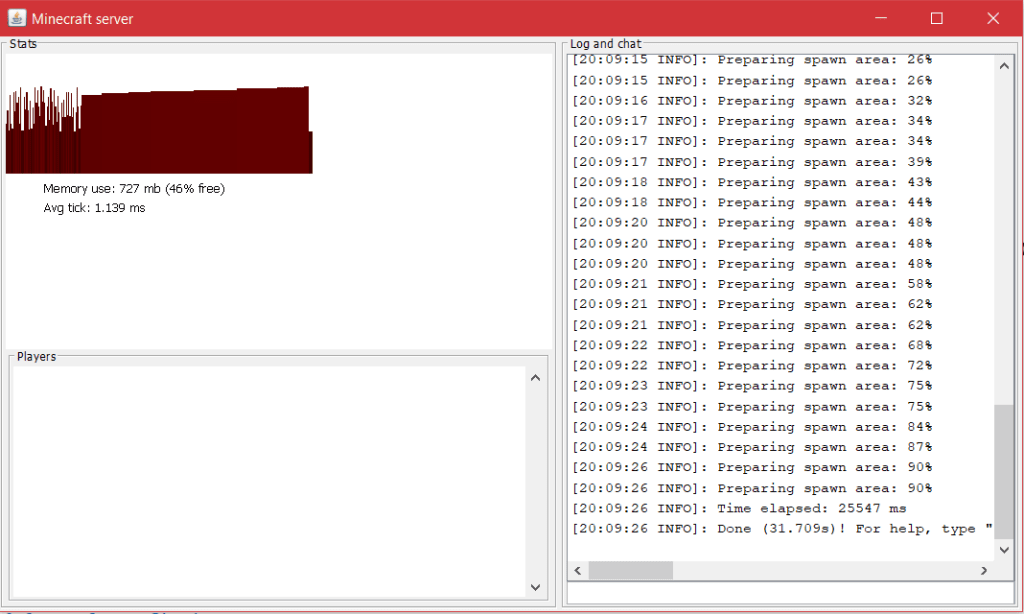
You can also start the server from the command prompt. In this case, go to the folder where the server files are located by typing “cd” followed by the path to the server file.
After that, type:
java -Xmx1024M -Xms1024M -jar server.jarThe last parameter (server.jar) must correspond to the file name of the server. The -Xmx1024M and -Xms1024M commands allow you to allocate the RAM intended for the server.
To start the server without a GUI add “nogui” to the end of the command we just saw, like this:
java -Xmx1024M -Xms1024M -jar server.jar noguiIf you’re starting the server directly from the command prompt keep in mind that the first startup will be used to create the configuration files and the “eula.txt” file. Then edit the parameters within this text file to accept the EULA, as we saw earlier and then run the command again to start the server.
Automate the startup of your Minecraft server
To speed up the Minecraft server startup we can create a batch file.
To do this, we open the folder where the server files are located and create a new text document.
Within the document we should write the command we saw earlier to start the server:
java -Xmx1024M -Xms1024M -jar server.jar nogui
pause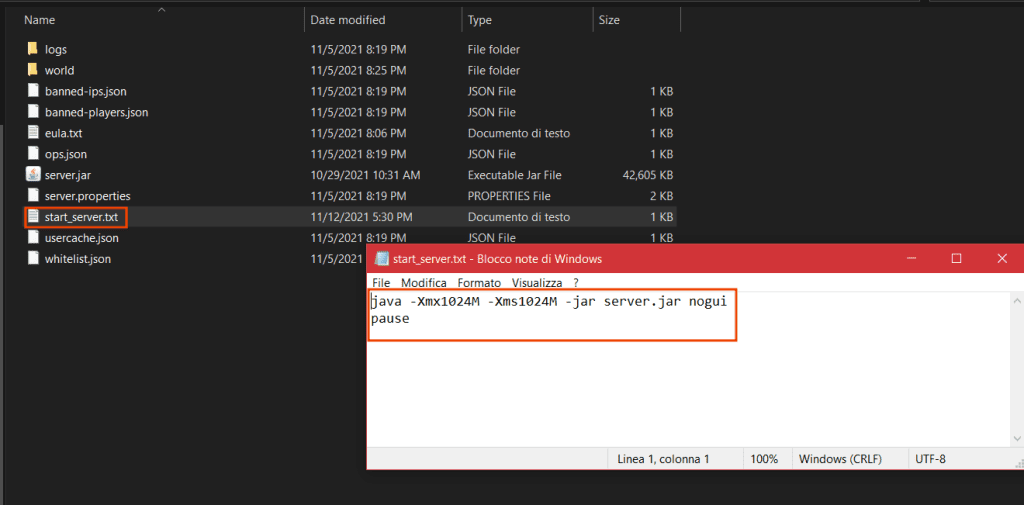
If you want to keep the server GUI open delete “nogui” at the end.
Then click on File → Save As and change the file extension to .bat. To do this follow the steps shown in this screenshot:

1. Click on Save As and choose All Files
2. change the file extension from .txt to .bat
In the folder we will then have the batch file we just created and we can delete the text file we had created.
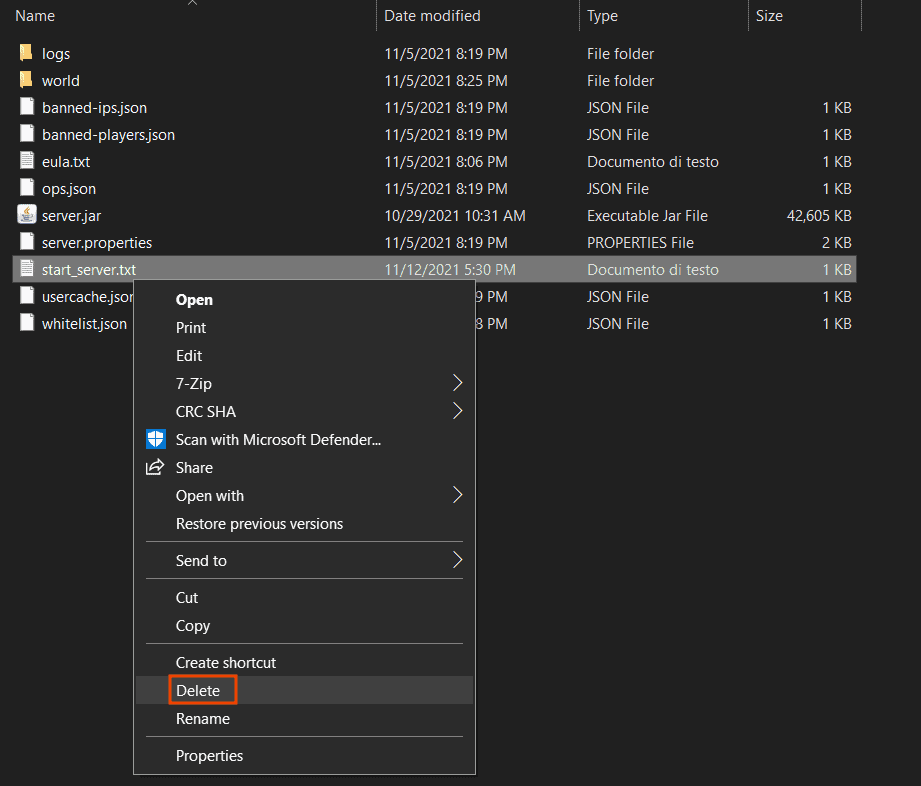
Now that we have created the batch file, to start the server we just need to double click on the newly created file, in our case “start_server.bat”.
How to create a Minecraft server on Linux
First you need to download the Minecraft server file, to do this you just need to follow the steps explained in the section download Minecraft server. After downloading it, create a new folder for example “server_minecraft” and move the file server.jar inside it.
At this point we need to prepare the system to run the server by installing the latest Java libraries.
Install Java
Before starting the installation of the libraries, it is important to update the repositories of your distribution, in our case Debian, with the command:
sudo apt-get updateNext we should install the Java libraries, in the case of Debian 11, if we want to run Vanilla versions of the server, we can directly use the command:
sudo apt-get install openjdk-18-jreFor some mods, however, you will need to have the entire jdk available, so it must be installed with:
sudo apt-get install openjdk-18-jdkStart the server
At this point from the terminal, we move to the server folder, in our case with:
cd server_minecraft
Then, you launch the server for the first time with the following command:
java -jar -Xmx1024M -Xms1024M server.jar
Since this is the first time it is launched, the server generates files and returns an error because the EULA has not yet been accepted.

To proceed, you must first accept the EULA. You can do this directly from the terminal using the nano text editor, with the following command:
nano eula.txtMoving with the arrows, let’s change the parameter “false” to “true” and then save with Ctrl+O. We must confirm the file name with Enter and close the editor with Ctrl+X.

Then you have to relaunch the server with the command:
java -jar -Xmx1024M -Xms1024M server.jarOr, if we want to start the server without a GUI, we use this command:
java -jar -Xmx1024M -Xms1024M server.jar -noguiConfigure the Minecraft server
After starting the server file, a “server.properties” file will also be created, which is the file that contains the server settings.
You can edit this file to change the server configurations and thus set the rules of the game. For example you can use it to set the game mode and the map that will be generated.
To edit the file, simply open it with a text editor such as Windows Notepad. Right-click on the file and then click Open With. Then choose Notepad or another text editor from the list to open the file.
If you have already started the Minecraft server, keep in mind that the changes to the file will only apply after restarting the server.
Let’s take a look at some of the main settings you can change to customize your Minecraft server.
Gamemode
It allows you to set the game mode between: survival, creative, adventure and extreme. To change the mode, just type the name of the one you want to play after “gamemode=”.
To start a Minecraft server in survival mode enter “gamemode=survival“.
Use gamemode=adventure for adventure mode and gamemode=creative for creative mode.
To enable extreme mode, however, you must change the hardcore value from false to true.
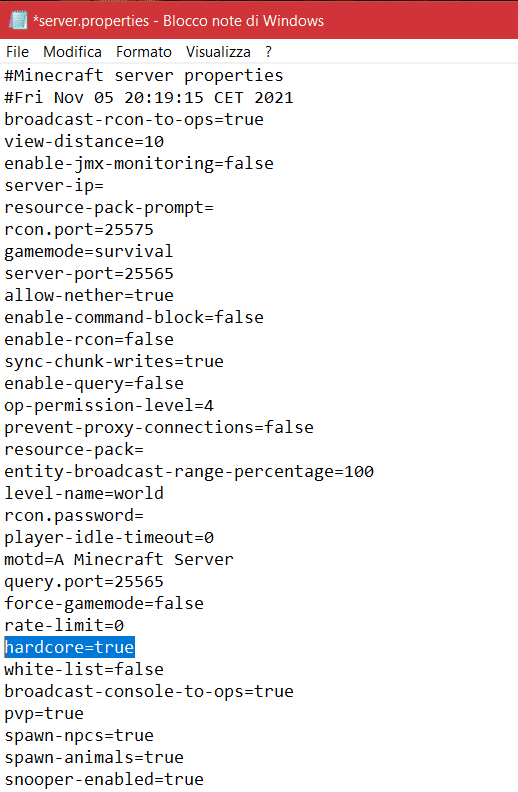
Allow-nether
You can choose whether to allow travel to the Nether. By default the option is on and so the portals to the Nether will work, if you want to disable it you must set allow-nether to false.
Difficulty
The difficulty of the Minecraft server can be set to 4 different values: peaceful, easy, normal or hard.
To change the difficulty you simply need to change the value after “difficulty=”. The default setting is “easy”.
Max-players
You can set a maximum number of players that can join the server by changing the value next to “max-players=”. The default setting is for 20 players.
Keep in mind that the number of supported players depends on how much RAM you have available. Please refer to the requirements tables for more details.
PVP
PvP mode is on by default, you can disable it by changing “pvp=true” to “pvp=false”.
Using the command console
As an administrator you can also use in-game commands through the text chat (which is opened by pressing “T“).
In multiplayer servers, commands allow you to view the list of players on the server, ban players from the server and so on. You can find the list of commands on wiki.
Let’s take a look at some of the main administration commands. Keep in mind that commands should be typed in text chat and are preceded by a slash (/) and sometimes followed by an argument (<argument>).
Comando | Descrizione |
|---|---|
/help | shows the list of available commands |
/list | shows the list of all players on the server |
/op | gives operator permissions to that player |
/deop | revokes operator permissions |
/kick | removes the player from the server |
/ban | inserts the player in the blacklist |
/ban-ip | adds the IP address to the blacklist |
/banlist | shows blacklist |
/pardon | removes the player from the blacklist |
/pardon-ip | removes the IP address from the blacklist |
How to connect to the Minecraft server
After following all the steps on how to create a Minecraft server, all that’s left to do is connect to the server.
To do this, start the game client and click on Multiplayer.
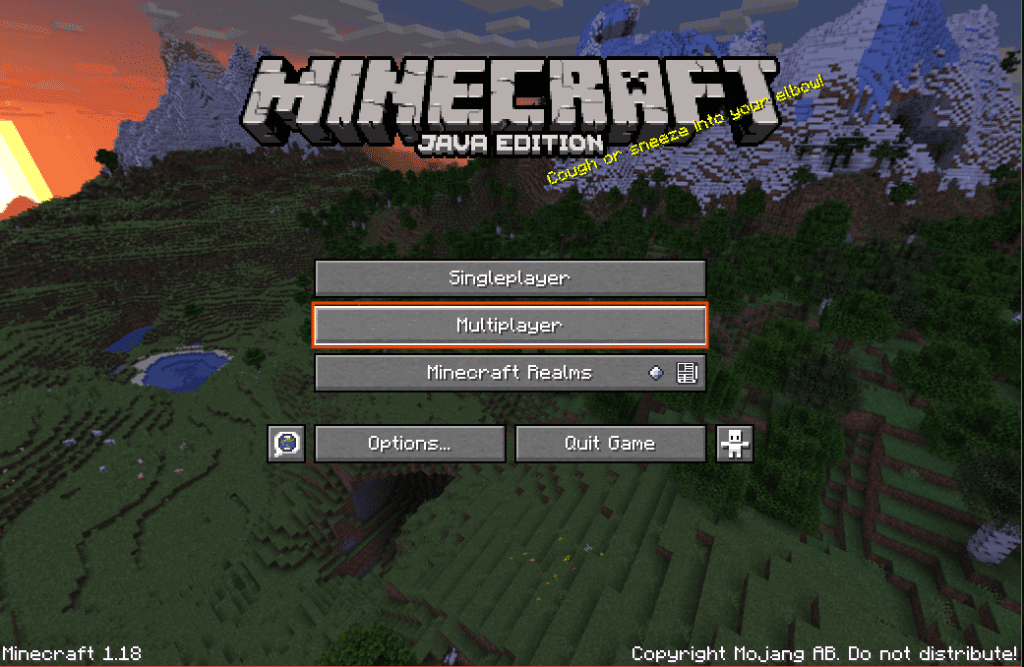
Then click on Add a server.
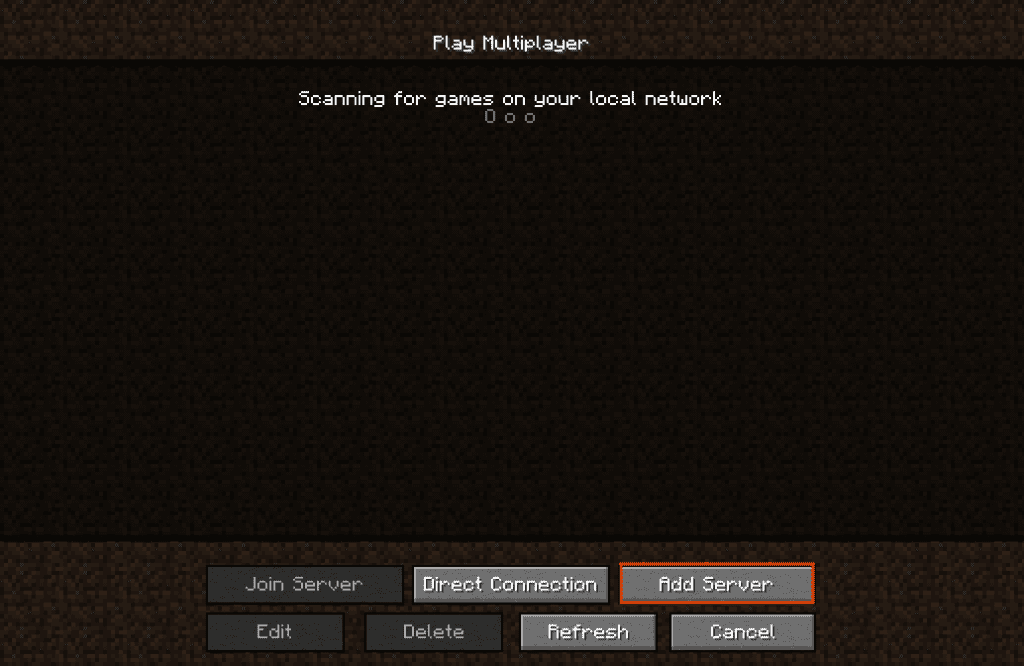
You will then have to enter a name for the server, so that you can reconnect in the future without having to enter the IP address again. In the “Server address” field, enter localhost.
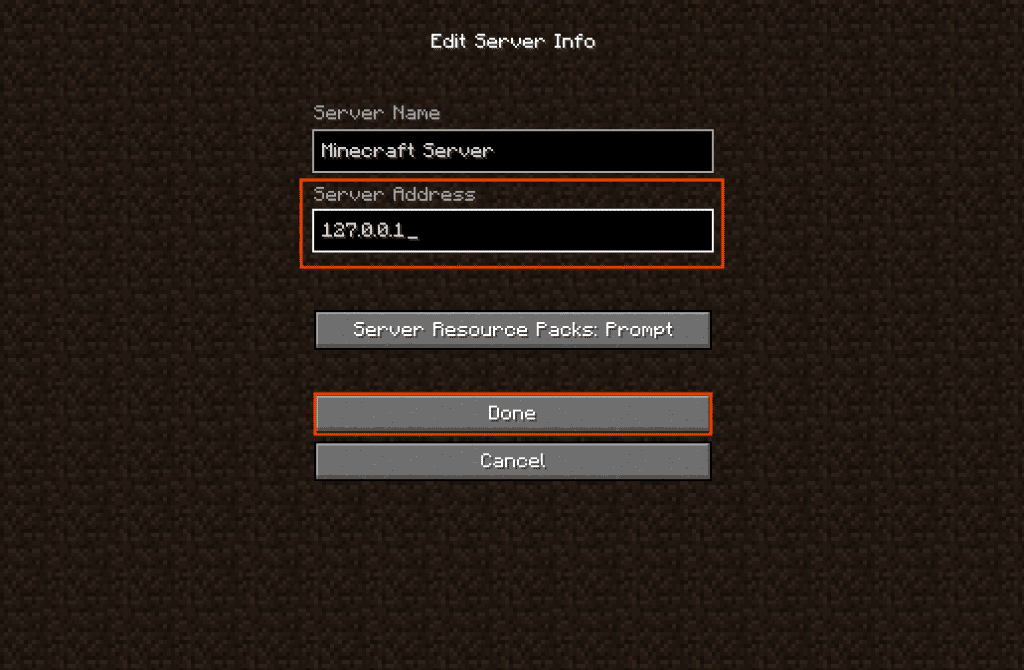
Keep in mind that you can connect to the Minecraft server by entering “localhost” in the IP address field only if you are starting the game client from the same computer on which you started the server.
You can also connect to the server by clicking on Multiplayer -> Direct Access. In this case, however, you will have to re-enter the server address each time.
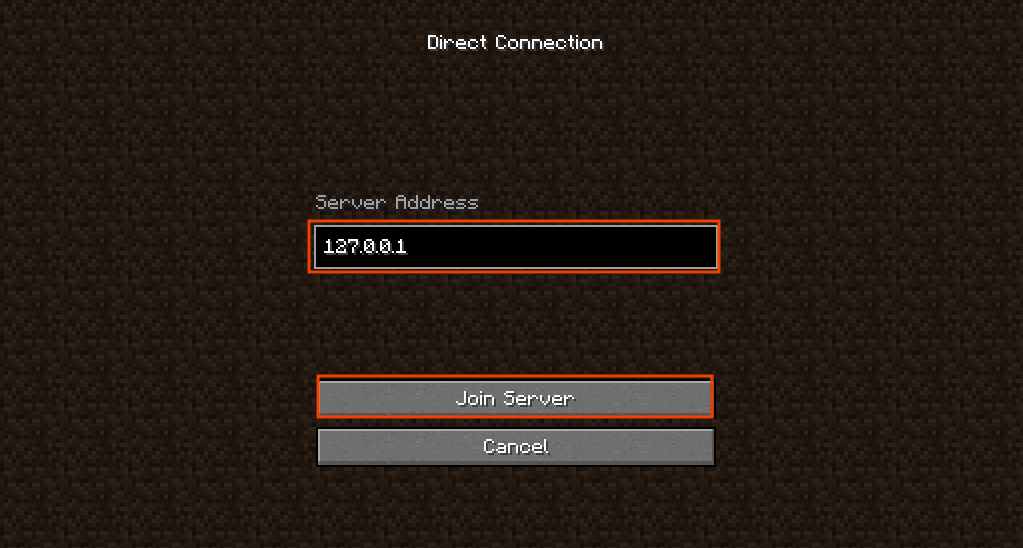
If you want to allow others to connect to your server, you’ll have to provide your public IP address which can be found at ip.supporthost.com.
Other players who join the server will have to do so using the server’s public IP address.
Users in your local network, on the other hand, will be able to connect to the Minecraft server using their local IP address directly. In this case, port forwarding will not be necessary.
Conclusion
In this detailed article, How to create a Minecraft server, we have looked at the steps necessary to create a Minecraft server on Windows and Linux. We started with the requirements and alternatives to using your own PC.
We have seen how to create and configure the server, how to use in-game commands as an administrator and how to connect to the server. Were you able to create your server following our guide or did you have any difficulties? Let me know in the comments below.



Leave a Reply